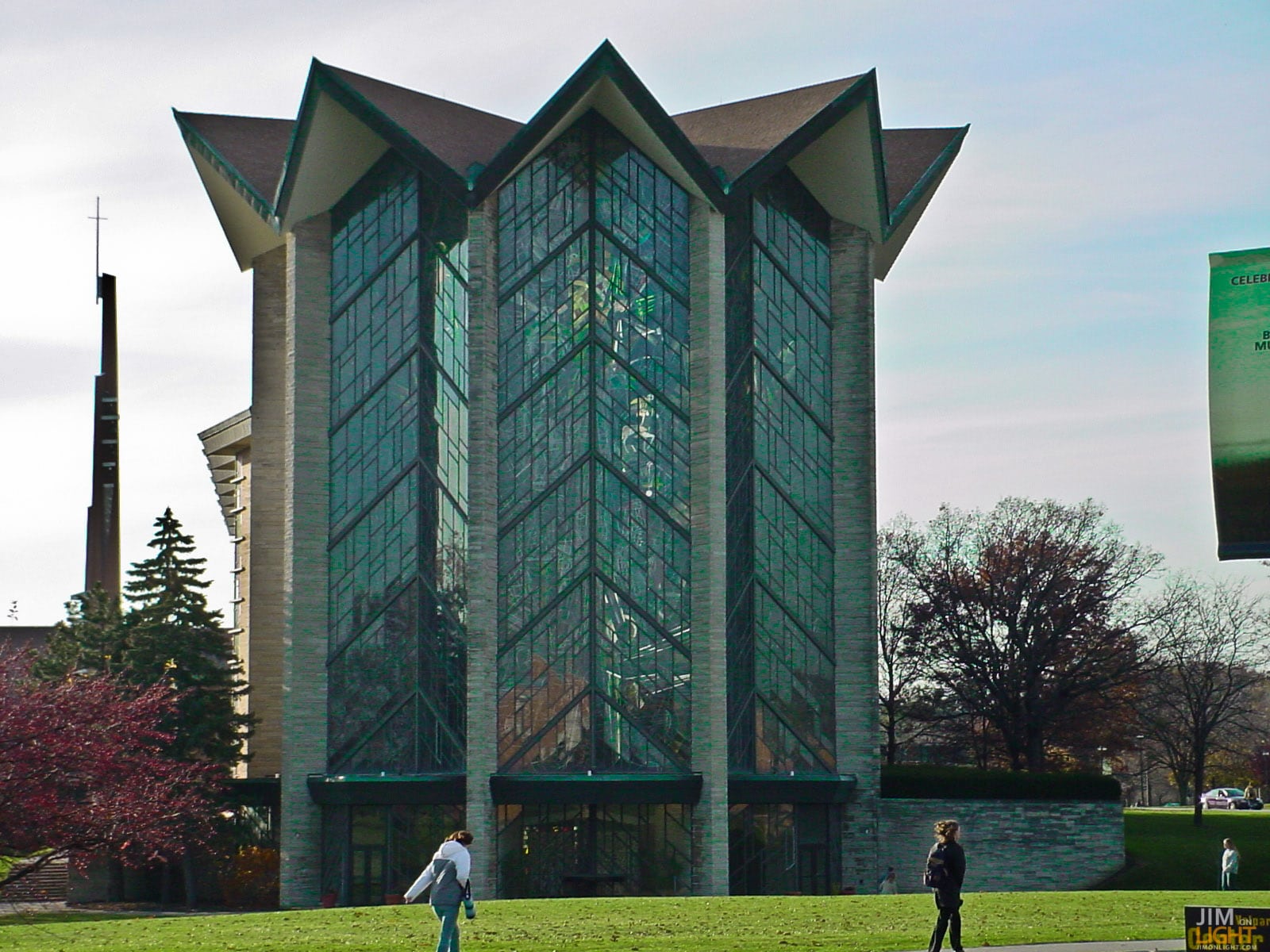
Once upon a time I was a guest LD for Valparaiso University‘s production of Anna Karenina, that was chosen to go to the American College Theatre Festival (KC/ACTF) Regional show. There’s only so much cueing you can do in a sitting, and one day I decided to get inspired on campus and visited the University chapel, called the Chapel of the Resurrection.
If you ever have a chance to swing through Valparaiso, Indiana, make a direct stop to see the inside of the Chapel of the Resurrection — this place is absolutely amazing whether you are a believer or an atheist. Check this out — the Chapel includes an amazing stained glass wall behind the altar (called the Munderloh Windows, designed by Peter Dohmen Studios of St. Paul, MN) which gets a good portion of the daytime sun, giving the Chapel an unbelievably beautiful blue scene. Some people call it “sermons and sermons of just color.” From the photo below, I can see why! Imagine standing in front of this goliath mass of colored translucent magictude:
About the Chapel of the Resurrection:
Groundbreaking for the Chapel construction took place in 1956. The building was designed by the architectural firm Charles Stade and Associates of Park Ridge, Illinois, though certain elements and features (e.g., the stone baptistry, the stained glass windows, etc.) were designed by other artists. Peter Dohmen Studios of St. Paul, MN designed the 95ft high stained glass windows, as well as the marble interzia altar, and the mosaic at the entrance of the chapel.
The altar is 20 ft long, made of various types of Italian marble. Peter Dohmen designed the inlaid marble pedestals to depict, with symbols, the four evangelists. Matthew is represented by an angel, Mark by a lion, John by an eagle, and Luke by an ox.
Peter Dohmen learned his skills at the top art academies of Europe. He became a well-known artist in Germany during the 1930s, executing major art works, such as stained glass windows, frescos on major public buildings, mosaics, etc. During the early 1940s he was blackballed by the government because of his outspoken opposition of the Nazi party. He immigrated to the United States with his family in 1951 and continued his artistic trade with great success. Amongst some of his major works are the stained glass windows in the library of Notre Dame University.
Total construction costs of the chapel were about $7.5 million, much of which came through individual donations.
The building was dedicated in 1959, part of Valparaiso University’s centennial celebration, and officially designated as the Chapel of the Resurrection at the 10th anniversary service in 1969.
The chapel itself is positioned completely east to west, so the building gets as much natural light as possible. Morning services are incredible, with those Munderloh Windows telling their own stories of times past:
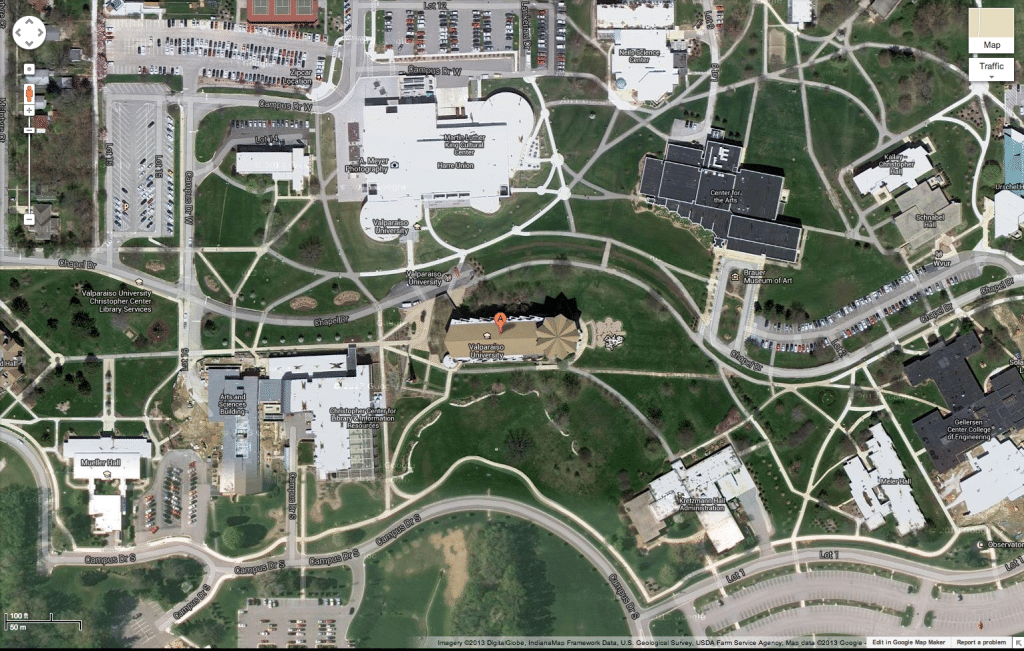
These Munderloh windows are quite incredible, I cannot get enough of them! A world-renowned glass artists (Peter Dohmen) and his assistant Dieterich Spahn created the Munderloh Windows specifically for Valparaiso University back in the early 1960’s. I highly recommend checking out Dieterich’s work, that man has the stained glass skills of none other. About those skills:
1938-1961 Early life
Spahn was born in Cologne in 1938. With the outbreak of World War II his family moved to a farm in Sergen, near Cottbus. After the war they moved again to Düsseldorf where Spahn studied the arts and worked with the renowned Düsseldorf artist Günther Uecker. In 1958 he created his first experimental glass panels. Between 1958 and 1960 he studied at the Werkkunstschule where he was exposed to the traditions of the Bauhaus and Jan Thorn Prikker. The following year he traveled extensively throughout southern France and Spain to study light in architecture. During this period he produced a number of watercolors and oil paintings which are now in private collections throughout Germany.
1961 – Move to the United States
In 1961 Dieterich Spahn was invited by the German-born artist Peter Dohmen to work in his St. Paul studio. It was upon his arrival in America that he began intensive activities with stained glass, mosaic and murals for sacred arts applications. He assisted in the production of a number of noteworthy commissions, including the stained glass windows and mosaics for the university chapel at Valparaiso University in Indiana, which became the largest stained glass windows in the United States.
In 1965 he began independent work in graphic arts. Around this time, the death of his mother prompted him to return to Germany where he viewed many works by Georg Meistermann and Ludwig Schaffrath and reestablished contact with the Düsseldorf art scene. This renewed his interest in painting and over the next several years he produced a series of paintings. In 1969 he returned to Germany to study the works of Georg Meistermann in depth.
1971 – Dieterich Spahn & Associates
Upon returning, Spahn entered into partnership with the New York artist Mel Geary to purchase Peter Dohmen Studios. This partnership saw the production of a number of large commissions, until Geary returned to New York in 1971. In this same year Dieterich Spahn & Associates, Inc. was formed, devoted exclusively to stained glass and mosaics for the sacred arts. Over the next decade Spahn worked with George Winterowd and the nationally recognized church architect Ed Sovik to produce 75 commissions around the country totaling more than 400 stained glass windows.
In 1977 Spahn traveled again to Düsseldorf following the unexpected death of his sister to be with his gravely ill father, who died within days of his arrival. Upon his return to Minneapolis he began a series of oil paintings which moved away from religious themes.
1980 – Family
In 1980 he married Joanne Shafer. Around this time he also met Frank Kacmarcik, a monk at St. John’s Abbey in Collegeville, Minnesota, and nationally recognized liturgical and architectural consultant. Spahn served as a guest lecturer at St. John’s University about stained glass and sacred art in the contemporary church environment. He also became a member of the St. Paul Archdiocesan Worship Board for Arts and Environment, a position which he held until 1986. 1984 marked the birth of his first son, Kevin, followed by David in 1987 and Alan in 1989. During this time he created a series of paintings drawing inspiration from the childhood images created by his children.
In 1988 Spahn interrupted his painting for over two years to focus on several major projects in stained glass, including the library window for St. Thomas University. During this period he also traveled to Düsseldorf to view the art of Joseph Beuys. Beuys’ work had a major, positive influence on Spahn’s perception and understanding of all art.
In 1991 Dieterich Spahn participated in the Wendekreis exhibition in Düsseldorf. This prompted a major change in his painting style upon his return. The next decade saw the production of a series of paintings which departed from traditional techniques of representation, as well as a number of large stained glass projects and commissions for liturgical design and consulting.
In 1999 Spahn again changed his painting style by reevaluating the role of the materials used and began a series which he continues to this day. This series of works reflects the changing role of art in the 21st century. In early 2004 he began a collaboration withWillet Hauser Architectural Glass, the largest stained glass studio in the United States, resulting in a large commission for the Chiara Center.
Also, regarding those windows… those beautiful Munderloh Windows… from Valpo’s Munderloh Windows page:
Behind the chancel, rising up 98 feet, the east end of the chapel are the beautiful Munderloh Windows, designed by the Peter Dohmen Studios of St. Paul, Minnesota, which capture the fresh morning sun. Often described as “sermons in color,” the stained glass artistry symbolizes the creative work of God the Father, the redemptive work of God the Son, and the sanctifying work of God the Holy Spirit. Illustrated in the window of the creation are the hands of God, a sun, Adam and Eve, plants and trees, and the serpent of temptation. The window of redemption highlights the life of Christ with symbols including a manger, a cross, drops of blood and angels. The window of sanctification is illustrated with ancient scrolls of the Bible, the dove of the Holy Spirit, an angel with a trumpet, and symbols of education such as a lamp, an owl and the torch from the University seal. The windows may be “read” in a clockwise path beginning in the upper right of each window.
Check these out, the photos are awesome (I guess if I do say so myself, since I took them back in 2003!)
The nave of the chapel is amazing in its own right, with a clerestory-style set of windows on the north and south sides of the chapel. Instead of horizontal clerestory, the ports are vertical, which creates some incredible shadow gobos all over everything!
If you prefer to see all of these photos in a blackbox gallery, click on one of the thumbnails below to check them out!
All photos © Jim Hutchison, 2003

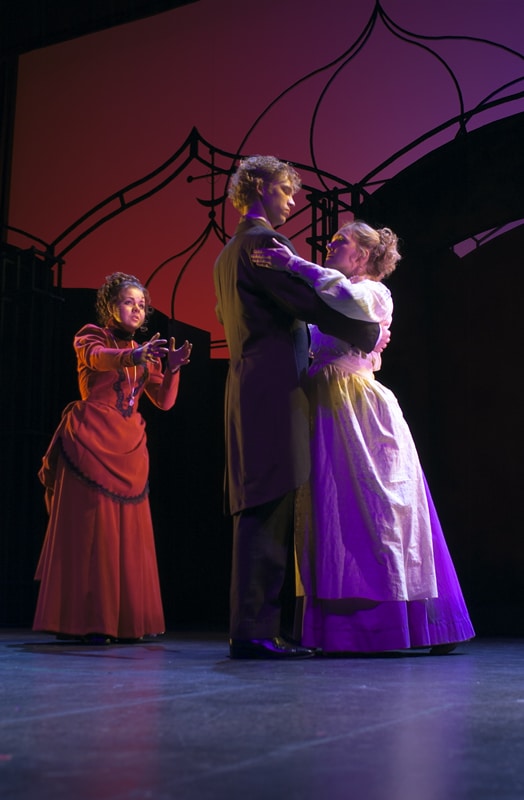
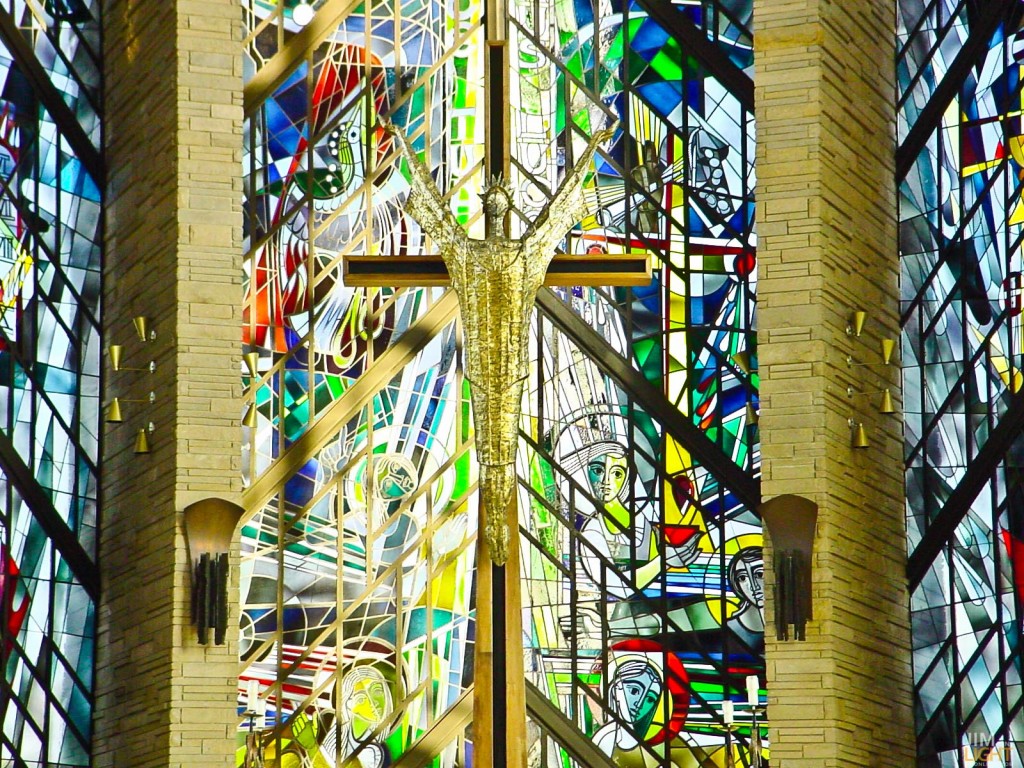
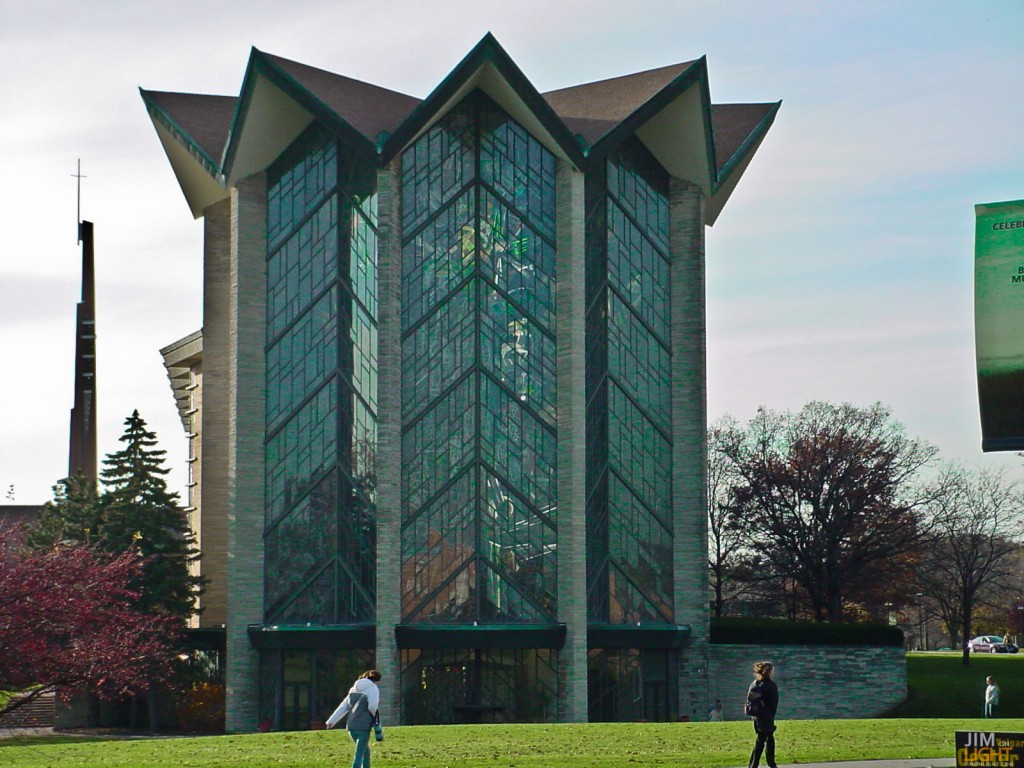



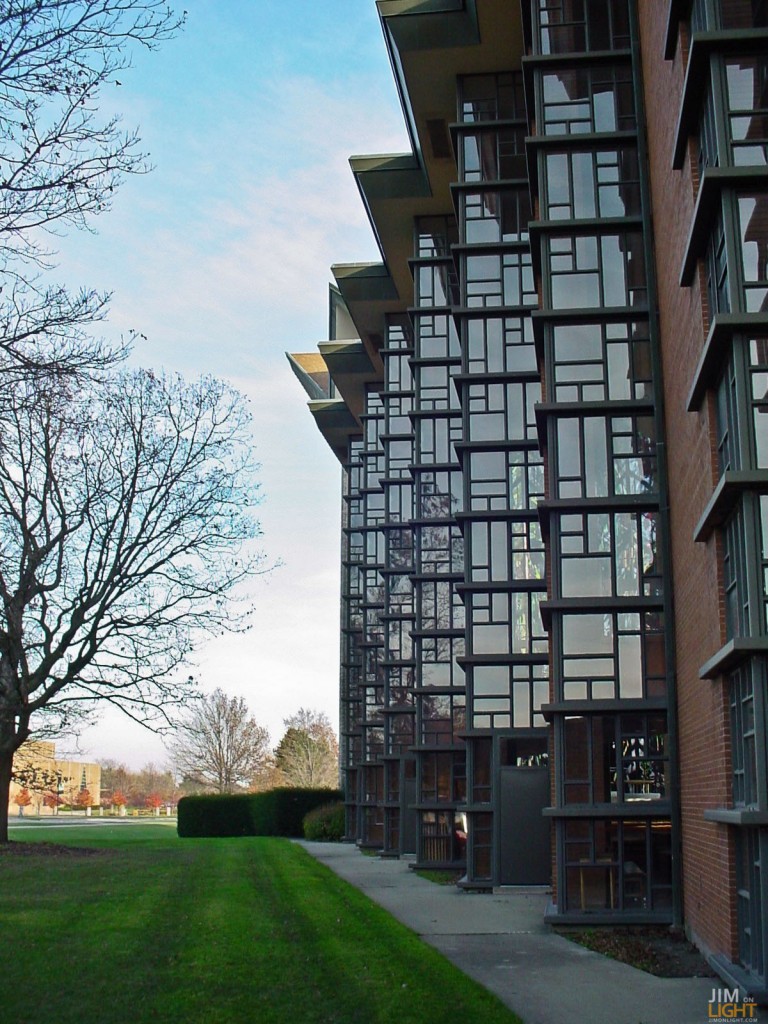




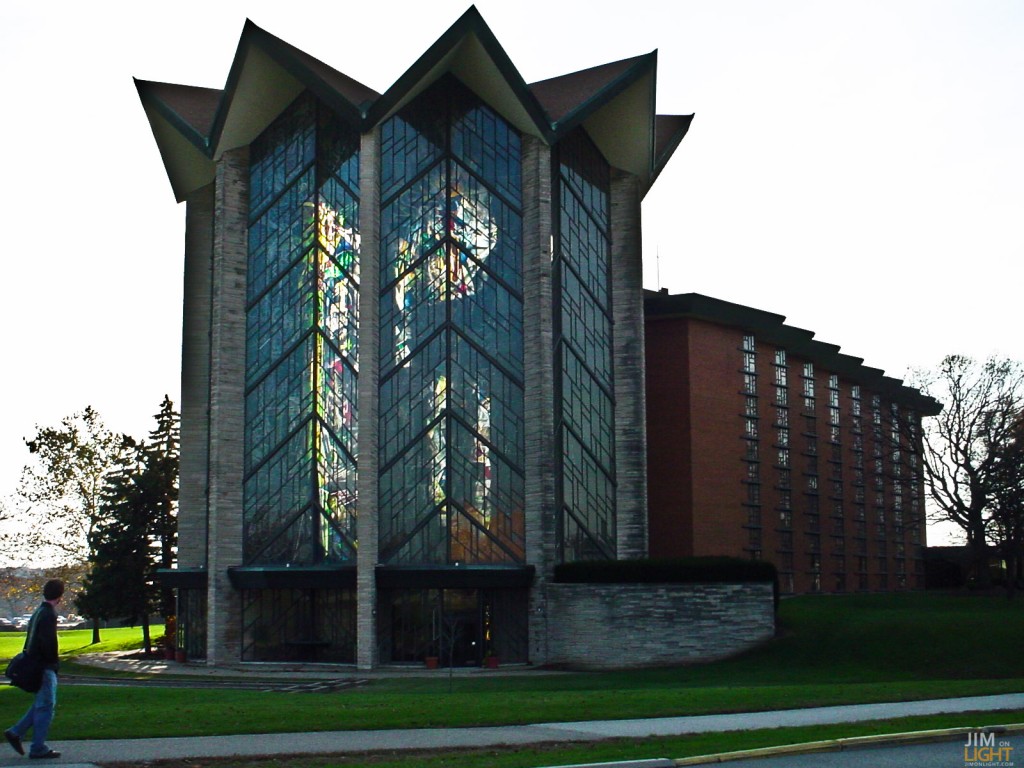
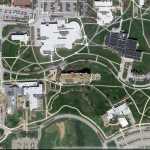
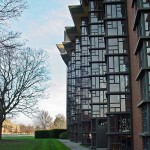
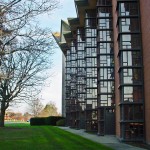

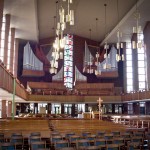
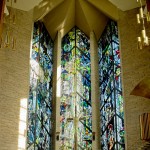
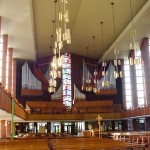
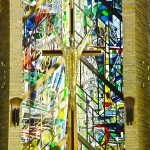

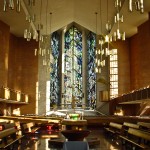


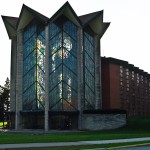


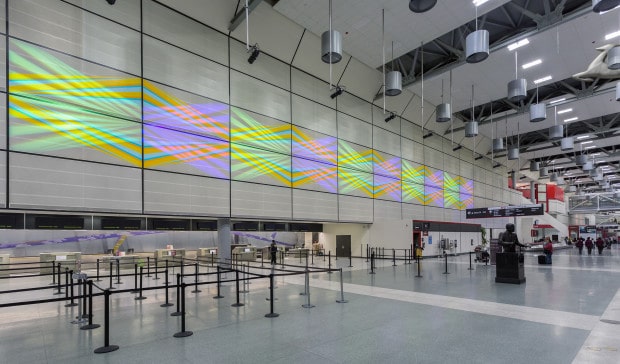
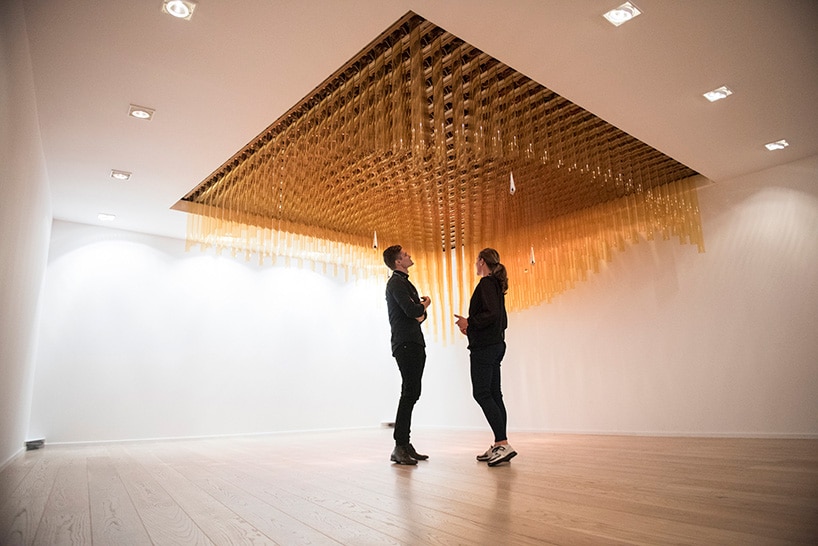

Comments are closed.